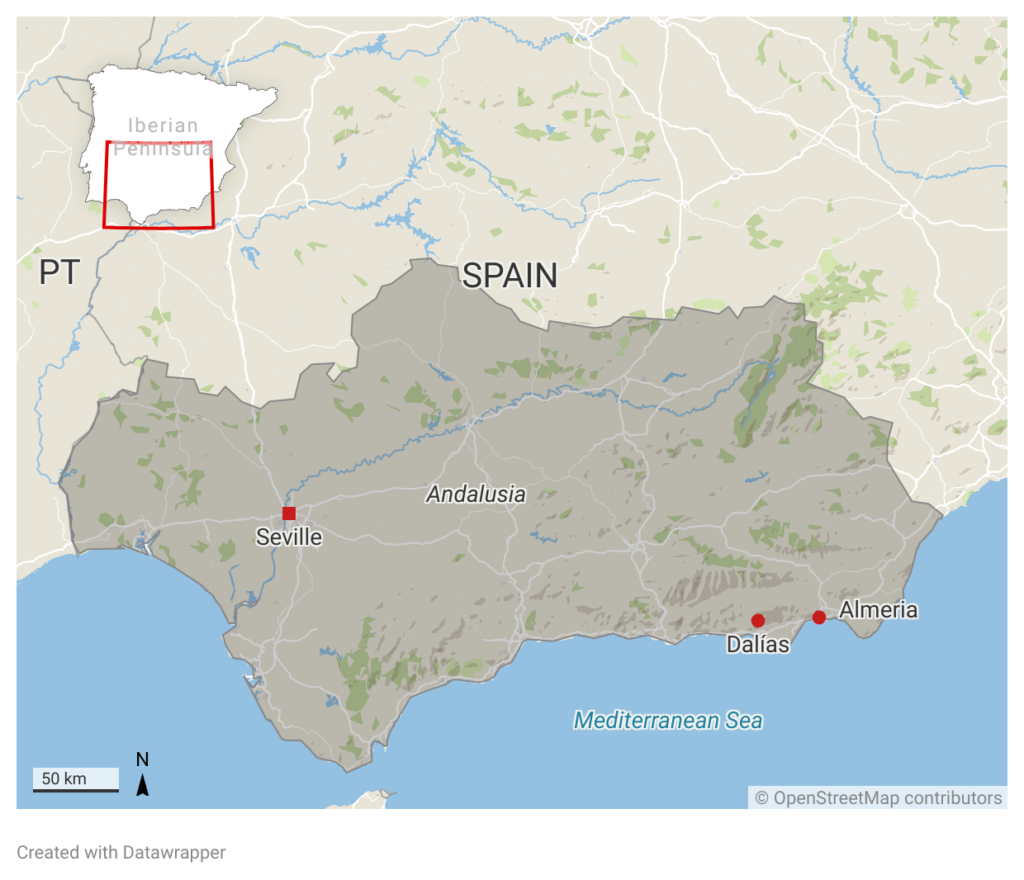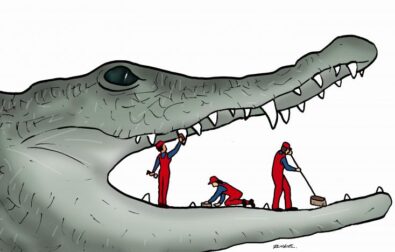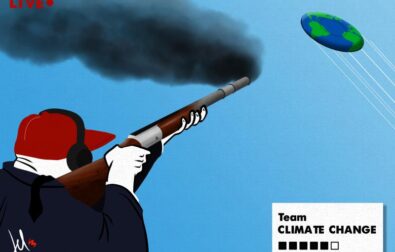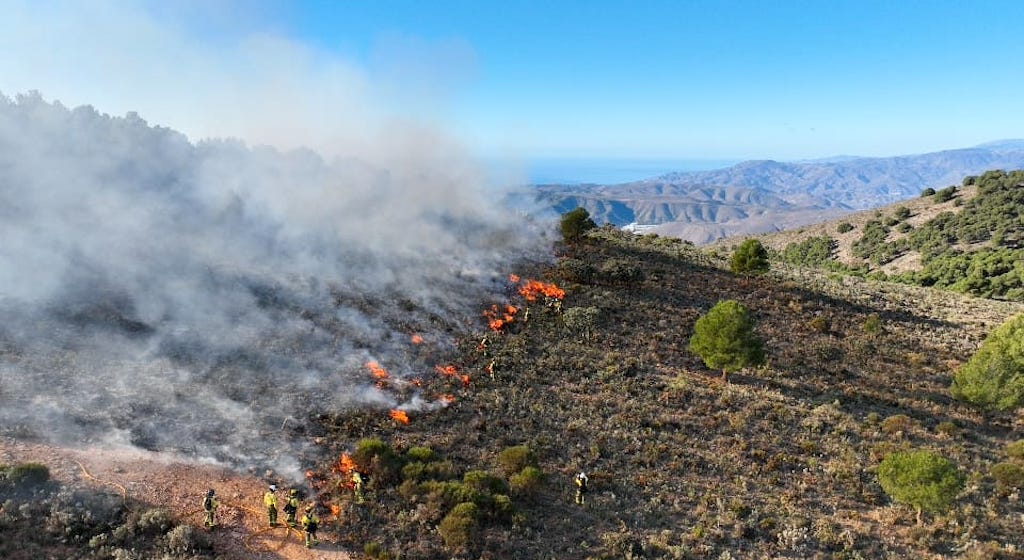In early December, in the hills of Dalías, near Almeria, a group of thirty firefighters from INFOCA, the firefighting service of the region of Andalusia, were torching an area of brushwood within a 40-hectare plot. Looking on were researchers as well as firefighters with experience in controlled fires. This was no pyromaniac spree but rather a well-planned test of "pyric herbivorism", part of a programme carried out by research centres in three Spanish regions: Andalusia, Galicia and Navarra.
What is happening in Dalías is an experimental trial of the COMPAS programme. The effects of controlled fires are being studied here, an area which has a particularly dry climate that is prone to desertification and wildfires. In climate terms, it is representative of many other places in the Mediterranean basin and beyond.
The use of fire to remove tinder – i.e., dry wild vegetation that has accumulated over time – is nothing new. In the past it was common practice to burn vegetation in order to reduce the potential for larger, uncontrolled fires.

Fire has always been used as a tool to "tame" natural landscapes and to fertilise soil. The ancient Romans "cleaned" forests in a process they called lucus, a word that has the same root as "light" and "shine". In Australia, a country that saw 25 million hectares burn in 2020 – the equivalent of the Italian peninsula – the Aborigines once used fire as a means of domesticating the landscape. Their techniques are described in a book by author Victor Steffensen, who proposes that the approach be revived.
Interesting article?
It was made possible by Voxeurop’s community. High-quality reporting and translation comes at a cost. To continue producing independent journalism, we need your support.
Until the mid-20th century in southern Europe, the mountainous landscape was a mosaic of traditional farmland mixed with forest and villages. Fire was widely used to shape the landscape and there was widespread knowledge of this practice. With the rural exodus of recent decades, the balance has shifted. The landscape is becoming more homogeneous and thus vulnerable to large fires, while fire as a tool is gradually disappearing from our imagination and use.
The aim of projects such as COMPAS is to reintroduce the use of fire and grazing in a combined form, a technique known as "pyric herbivory". Justo Porfirio Arroyo, a technician from the fire service INFOCA and a member of REPCA (Red de Áreas Pasto-Cortafuegos de Andalucía) and the association Shepherds for the Mediterranean Mountain, is in charge of identifying the areas where fire may be used, and for contacting shepherds there. He explains: "First an area is identified where there is grazing land and where there is a high risk of fire. Then the burning of a specific area is organised by a specialised team, so as to remove brushwood and low vegetation. After a few months, grazing is carried out on the plot. This typically means goats and sheep, which prefer the new shoots that emerge after the fire. These are more tender than wild plants that have grown and withered over time."
Ana Belen Robles is a partner in the COMPAS project, based at the Zaidín Experimental Station in Granada. "Although it is surprising, floral biodiversity increases after burning and grazing", she says. "And now we are seeing that insect biodiversity also improves. Controlled fires do not reach high temperatures, so the soil doesn't get too hot, which happens in larger fires, and therefore the soil fertility cycle is faster. [...] The problem today is finding shepherds. There are very few left. It is important to realise that extensive grazing does not only result in 'meat and milk' for consumption. It is much more. it provides ecosystem services to the landscape."
In the past, it was the shepherds themselves who used fire to clear the mountains. This practice has been abandoned, partly due to stricter fire laws. Robles explains: "Today, the amount of organic fuel is much higher than in the past. After decades of neglect, the shepherds no longer trust themselves to use fire, for fear that it might get out of hand."
For this reason, the COMPAS project envisages education so as to create a new professional role, that of the 'fuel manager', i.e., people skilled in reducing the accumulation of forest mass, the stuff that makes forests dense and impenetrable. This fuel is easily ignited during the driest and most arid months. Combined with the effects of climate change, the ideal conditions are thus created for large, uncontrollable and destructive fires. "After understanding which regional laws currently limit the practice, we need to promote the use of these controlled fires combined with extensive grazing," adds Robles.
In Spain, around 60 percent of forests are privately owned, and it is not always easy to convince the owners of this high-fire-risk land that controlled fires can function as a form of prevention. It is crucial to raise awareness of the fact that fire can be an ally in adapting to climate change, rather than something that must be suppressed in any form.
The use of extensive grazing is a technique that has been used for years by authorities such as INFOCA, but it is not the only one. The removal of brushwood tinder can also be done with heavy machinery or manually by skilled labourers. "But some areas are very difficult to access with machines or lighter tools, whereas animals such as goats and sheep can get there without problems", says Justo Porfirio Arroyo. "A mechanical job costs about €900-1000 per hectare, and can go up to €2,500 if the vegetation is dense. With grazing, maintenance costs an average of €60 per hectare." The pastoralists therefore receive an economic subsidy from INFOCA based on various factors, such as the slope of the land and the type of vegetation. In this way, they create "firebreak" areas with less accumulated fuel, and in a sense they tame the landscape.
The use of controlled fire seems to be an increasingly necessary solution for southern Europe and beyond, and is also endorsed by the European Environment Agency as a form of climate-change mitigation. As a synergy between the skills of firefighters, forest managers, pastoralists and outside experts, this technique could be the key to preventing the megafires of the future.












